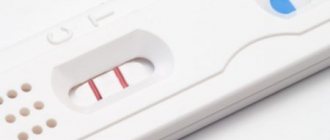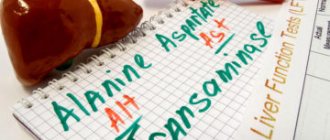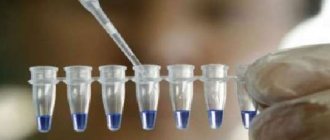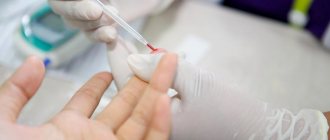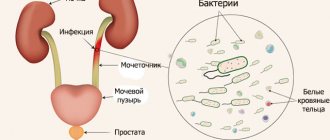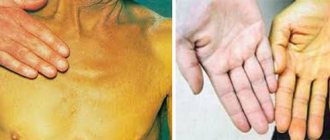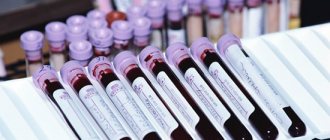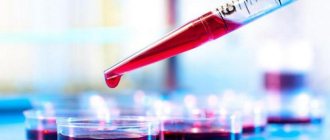DNA genealogy: description and possibilities
The DNA results include information about the ethnicity of people in 350 regions. The ability to obtain data about the ethnic groups from which the subject may descend is due to the presence of the same number of chromosomes in them.
The existence of potential relatives is identified through DNA matching with other people who have taken the test. This is possible because deoxyribonucleic acid, or DNA, contains complete information about several generations of people. DNA displays mutations that allow one genetic lineage to be distinguished from another.
There are three main types of genealogical DNA tests that determine ancestry:
- autosomal - along all branches of the family tree;
- mitochondrial - study of the maternal line for men and women;
- Y test - done for men, determines the direct paternal line.
Genealogical DNA testing does not provide insight into medical conditions, disorders or inherited diseases.
The study allows us to clarify the following aspects:
- genetically close relatives within 5-6 generations;
- percentage of ancestors from different ethnic groups;
- kinship over several decades or centuries;
- assigning a person to a certain race.
Materials for examination
Almost any genetic material is suitable for genealogical DNA research. Typically, an oral swab or scraping of the buccal epithelium is taken for analysis. However, in many laboratories, equipment allows the analysis of genetic material isolated from various parts of the body and objects.
Body parts from which DNA can be isolated and fluids:
- bone;
- nails;
- hair;
- blood;
- sperm;
- earwax.
For a DNA test, you can use personal items or things with remains of vital activity:
- cocktail straws;
- pacifiers;
- cigarette butts;
- chewing gum;
- toothbrush;
- comb;
- razor blade.
The test for nationality can be done non-invasively, so there is no need to damage the skin and there is no risk of infection.
Men will need to submit their own genetic material for a DNA nationality test. Women must also be provided with the father's genetic material.
The video allows you to learn more about DNA genealogy. The video was filmed by the pereformat channel.
DNA analysis on paternal side
By the Y chromosome, which is transmitted only through the male line, one can find out the ethnic origin of a person through the father. The Y-STR test is used to determine recent ancestry, and SNP to study more distant ancestry. In addition to establishing membership in a particular ethnic group and obtaining interesting information about ancestors, a paternal DNA test makes it possible to check the relationship between men without involving the alleged father.
Paternal DNA testing is carried out only for men and is used for various purposes:
- during adoption – to identify biological parents;
- to resolve legal disputes;
- when conducting forensic examinations;
- to establish close or distant relationships;
- when resolving immigration issues;
- to satisfy my own curiosity.
Women do not have Y chromosomes, so male blood relatives are tested to determine paternal ethnicity.
Picking up and sending materials
Genetic material for a DNA nationality test can be obtained with the help of a specialist in clinics and laboratories that guarantee confidentiality and quality of the study. You can also prepare materials for analysis yourself.
Some companies offer clients to take the nationality test remotely. To do this, it is possible to send genetic material by mail, pay by card and receive the results by mail or via the Internet.
Basic rules for self-sampling for a DNA nationality test
To obtain genetic material you will need:
- cotton swabs purchased at a pharmacy;
- you can also use a special kit to collect material for a DNA test;
- clean envelopes.
Rules for the procedure:
- Sign the name of each participant in the collection on the envelopes before the procedure begins. There is no need to be afraid that the envelope will become saturated with saliva; the material that will be on the cotton swab will be taken for analysis.
- Before the procedure, people involved in collecting genetic material must rinse their mouths with clean boiled water and get rid of any remaining food.
- Take a cotton swab by one end and rub the other end firmly along the inside of your cheek. It is advisable to move the stick along the area between the cheek and gums.
- For more efficient collection of material, it is advisable to slightly rotate the cotton swab.
- After collecting the material, avoid contact of the cotton swab with your hands and other objects. Cut off the side of the stick that was not involved in collecting the material so that the specialist does not check the wrong area. Seal it in an envelope.
- It is strictly unacceptable to put the analyzes of different test participants in one envelope. In this case, there is a danger of mixing genetic material and incorrect DNA test results.
- Envelopes with analysis can be stored at room temperature.
- The envelopes must be given to the courier, he will take them to the laboratory.
DNA test kit
Sequencing
It is better to take two or three tests from each participant in the DNA test.
How to find out your ethnic origin
Genetic examination is carried out in special laboratories that have the necessary equipment and reagents. To find out your ethnicity, you need to provide a sample of biological material. In most cases, buccal epithelium is used for research, which is obtained from the inside of the cheek. If it is not possible to take such a smear, then other material is used - stains of biological fluid, hair, skin particles and much more. Such samples are called non-standard.
DNA testing is carried out using different methods, depending on the gender of the person being tested:
- Women. Determination of maternal ethnicity is carried out by examining mitochondrial DNA, which is isolated from one’s own biosample. To test on the paternal side, a male DNA sample is required. This can be any man on the father's side, for example, uncle, brother, grandfather, etc.
- Men. To establish a relationship to a certain group along the male and female lines, a man’s biomaterial is sufficient. This material is sufficient for both the study of the male line (Y chromosome) and the study of the female line (mitochondrial DNA).
By studying the mitochondrial haplogroup, ethnicity can be determined at the continental level. Determining a haplogroup allows you to determine a person’s nationality using a DNA test.
Stages of a race test
The genealogical DNA test is carried out in several stages:
- The subject submits genetic material collected independently or in a clinic.
- Specialists in the laboratory extract DNA from the sample and begin analysis. The results obtained are checked and compared with the results from the haplotype reference database (the similarity of DNA zones characteristic of certain population groups or a set of closely related genes).
- They check the gene sequence and compare it with those found in the existing database. The data is used to identify ethnic groups with maternal and paternal links.
- After completing laboratory studies, genealogists move on to interpreting the deciphered results, which make it possible to identify the history of the family.
- For people with mixed origins, a detailed breakdown is made, in which the percentage of genes of different nationalities is demonstrated.
Revealing meaning
The term “nationality” implies genetic belonging to a particular nationality. Human DNA contains a huge storehouse of information from our ancestors. From the most ancient time period to this day, the genome of each family member is stored in genes.
To find out the history of your origin, you need to contact specialists. Thanks to special tests on genetic material, it is possible to trace the branch of development of ancestors and find out how to determine your nationality by appearance.
DNA test price and time to receive results
Often, the speed of obtaining DNA test results and its cost are directly proportional to the volume of research that needs to be carried out. The more information the client needs to receive, the longer it will take to study the information, the more work specialists need to do and decipher the larger amount of data. Accordingly, the cost of analysis is higher.
The cost of DNA tests starts from a thousand rubles (if necessary, to study one gene) and with a full genetic examination can reach hundreds of thousands. On average, the cost of genealogical analysis will be about 10,000-15,000 rubles. The period from taking the test to receiving the results takes, on average, three to four weeks.
The cost of a standard DNA test to determine nationality by city in Russia.
| Region | Price | Firm |
| Moscow | from 11900 rub. | "Medical genomics" |
| Saint Petersburg | from 13900 rub. | "Medical genomics" |
| Novosibirsk | from 12500 rub. | "Medical genomics" |
| New Urengoy | from 15,000 rub. | "Medical genomics" |
| Ekaterinburg | from 10,000 rub. | "Medical genomics" |
| Sochi | from 16,000 rub. | "Medical genomics" |
| Yaroslavl | from 9000 rub. | "Medical genomics" |
Why do you need a DNA test for nationality?
The desire to know your roots. Nowadays, many people are compiling a family tree. DNA testing will show which peoples’ blood flows in the veins of the person being tested and what the nationality of his distant ancestors was.
Some genetic pathologies appear more often in certain nationalities, therefore, having learned your roots, you can assume the presence of diseases that can appear even at a fairly adult age and be passed on to children. Having information about your national roots, it is much easier to discover the cause of the illness that has arisen.
Video
An interesting social video on the topic of DNA testing was filmed by the Elena Malysheva channel.
Do you have any questions? Specialists and readers of the HROMOSOMA website will help you ask a question
Was this article helpful?
Thank you for your opinion!
The article was useful. Please share the information with your friends.
Yes (87.50%)
No (12.50%)
X
Please write what is wrong and leave recommendations on the article
Cancel reply
Rate the benefit of the article: Rate the author ( 8 votes, average: 4.88 out of 5)
Discuss the article:
How to determine your nationality by appearance
The method of determining nationality without special tests is visual. There is a set of appearance traits that are inherent to a particular people. It is impossible for a representative of any of the nationalities to exist. The reason for this was historical events and the globalization of the world. When the boundaries between cultures and countries are blurred, a large number of interethnic marriages appear. Children born in such a union are representatives of several nationalities, so external signs contain the history of different nations.
Where can I get a DNA test for ethnicity?
Institutions that engage in such research guarantee complete confidentiality and high quality of the research conducted. Special clinics and laboratories allow people to undergo DNA ethnicity testing.
You can conduct a test remotely and send genetic material by mail. Services are paid for by credit card, and results can be received by mail.
Types of analysis
Research conducted using DNA falls into the category of modern analytical tests. Every person can find relatives and find out the origin of their ancestors. Therefore, DNA analysis represents a treasure trove of the entire history of human evolution. There are three types of genealogical DNA analysis:
- autosomal;
- mitochondrial;
- Y test (done to men, determines direct paternal lineage).
Autosomal analysis is carried out on all branches of the family tree. Mitochondrial involves conducting a study of the maternal line. The Y test is carried out in relation to men, as it allows you to determine the paternal line. It is important to know that genealogical testing does not provide information about hereditary diseases and various disorders.
Analysis capabilities
The existence of family ties between people is identified by comparing DNA with another person. This is due to the fact that deoxyribonucleic acid contains complete information about several generations of people. A DNA ethnicity test allows you to distinguish one genetic lineage from another.
Deoxyribonucleic acid is a kind of biological “passport” of a person. Therefore, conducting a DNA study allows you to obtain information about ethnicity, analyze a person’s origins, and also identify a predisposition to genetic diseases. The information obtained will help you adjust your diet, lifestyle, and also prevent the development of various pathologies. Carrying out a DNA test is gaining great practical importance in the modern world.
